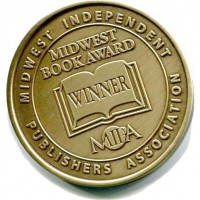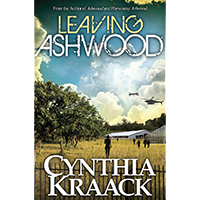A funny thing happens when your new book is released—suddenly there is no time to write. This Fourth of July weekend my family found other sources of entertainment and I divided my hours into segments for writing, book release activities and relaxation. Overall, the decision was right.
Ellen Shriner (wordsisters.wordpress.com) invited me to become part of the #MyWriting Process blog tour. Ellen is serious about writing. Her main work is creative nonfiction. Her professional work is in communications. She has taught writing. She and Elizabeth de Grazia explore a wide variety of topics.
If you’re interested in how other writers manage their creativity, or just curious about writers, click on #MyWritingProcess and enjoy reading.
My published books are speculative fiction. I also write contemporary fiction. Leaving Ashwood completed the Ashwood trilogy that follows a family for 25 years after a global economic collapse. My first novel, Minnesota Cold, won the 2009 NEMBA in Fiction. I have had a number of short stories published as well. In 2010 I completed a M.F.A. at the University of Southern Maine’s Stonecoast Program in Creative Writing.
What is my writing process? Here are today’s best answers to the four questions.
#1: What am I working on? Aside from marketing Leaving Ashwood, I am revising a contemporary novel for an indie press. Unfortunately we don’t have a working title to share. I wish I were revising a second contemporary novel. When I am short on time, I write small inserts for that novel. Some of the text will remain backstory; some might be included in the next version.
At any time I am also producing new short stories. I usually have one new story in development. In the past year I assembled a submission calendar and send out a handful of stories each month. I am working on pulling together a short story collection. Last, I have a memoir project about my great-grandmother in an early research stage. Like many writers I teach and do presentations.
#2: How does my work differ from others of its genre? Most speculative fiction has a strong socio-political bend. The genre has also developed a taste for thriller pacing and action. My writing also explores relationship challenges in a future world—what makes a family, gender roles in times of change, the fate of vulnerable populations. The Ashwood trilogy is a family saga as well as all those things speculative fiction must be. I create strong female protagonists whose influence is often intellectual and emotional.
#3: Why do I write what I do? I write fiction because I love fiction. I’ve been a newspaper reporter, a corporate communications professional and a freelancer. While many writers talk about their work being cathartic, my writing may be a way for me to push through concerns about the future. Both of my contemporary novels are about losing a parent. Both were started while my parents were alive. My speculative fiction deals with surviving in a time of infrastructure collapse, about a global depression, about staying relevant regardless of age.
#4: How does your writing process work? “Where do you get your ideas?” and “Do you write every day?” are the two most common questions I am asked. Truthfully, my stories are often spontaneous.
The second part of that question is thorny. For many years I wrote about six days a week. If nothing flowed, I would use Julia Cameron’s The Artist Way Morning Pages Journal and write three pages. Because of significant family events, that time has shrunk to about four mornings and a few afternoons including time working on my blog, marketing activities and true writing. My typical working times have always been early morning or late evening.
I wrote Minnesota Cold without any planning. I knew the main character and had written a short story about her life. Then I wrote until the book was done. Then I rewrote the book in a different voice. Then I got serious. It was a tremendously inefficient way to write a book. For the Ashwood trilogy I created the dramatic arc of the three books then wrote a few paragraphs for each book about the main character, the family and the world in which the story would happen. I outlined one of the books and found that didn’t work for me. I created a storyboard for the other two books with a few paragraphs about critical events or changes and found this approach clicked. I’ve used the storyboard technique for my second contemporary novel.
It is critical for me to be able to create a “What is this story about” page which will hopefully be distilled to a one sentence description later. A writing group of established writers continues to be important. Their input often drives significant rewriting or subtle changes.
When a large piece is complete I like to set it aside for a few months then read it from start to finish with a highlighter and colored paper flags nearby. From this read I draft questions, study characters, develop revision direction. I also assemble a set of fact sheets at this time to keep track of simple facts and plot points. Then I tackle rewriting. And tackle it again. And again. When I feel the project is nearly complete I ask a very small group of readers to read the manuscript. Then I rewrite.
The process is always a work in change. I learn with each project what worked or needs improvement.
Next Writer: Gary Lindberg has agreed to grab the baton and join the #MyWritingProcess blog tour.
I’ll use his own words to introduce Gary: “I am a recovering filmmaker with over 100 national and international awards, including writing and producing “That Was Then, This Is Now”, starring Morgan Freeman and Emilio Estevez, for Paramount. Since turning to writing novels, chiefly thrillers and historical fiction, I have published an unbroken string of four bestsellers, the first of which was The Shekinah Legacy, which was the #1 bestselling thriller on Amazon in 2012. In late 2012 I founded a publishing company called Calumet Editions, which has now published about a dozen talented authors in many genres—mostly fiction, but also non-fiction.”
Gary is a fascinating person…and writer. It’s hard to believe that this gentle soul manages to kill off so many characters in every thriller. His writing process description must be interesting.
Thanks for reading. Please come back to visit. My posts are always much shorter.
 company with no insurance, these stories can be game changers. Unfortunately this isn’t a new story unless you are one of the thousands who have decided to start your own business. About 30% of the U.S. workforce are self-employed or work for someone who is according to the Pew Institute.
company with no insurance, these stories can be game changers. Unfortunately this isn’t a new story unless you are one of the thousands who have decided to start your own business. About 30% of the U.S. workforce are self-employed or work for someone who is according to the Pew Institute.



 schools. But book clubs, libraries and schools first need to know about a quality book by an unknown writer.
schools. But book clubs, libraries and schools first need to know about a quality book by an unknown writer.








